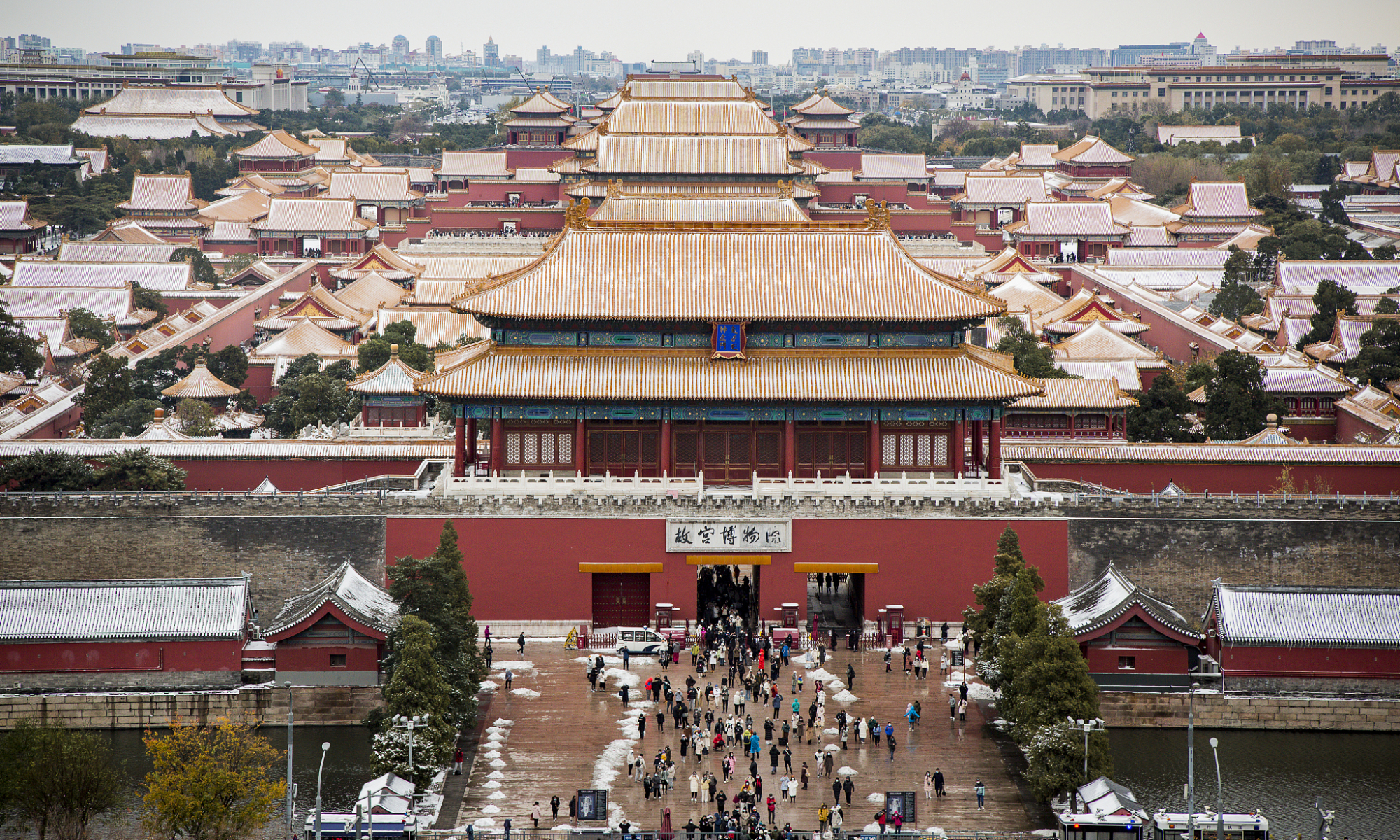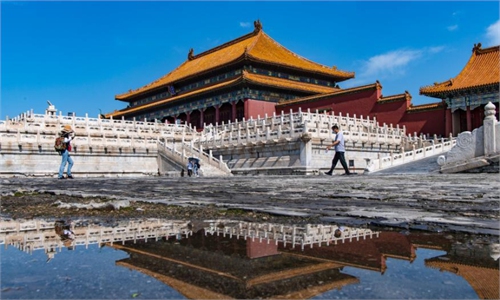Fruitful results yielded in archaeology, cultural heritage protection over past decade

A view of the Palace Museum in Beijing. Photo: VCG
Cultural heritage serves not only as an important and impartial recorder of history, both ancient and recent, but also links the Chinese nation with its deep historical bond, demonstrating the uniqueness of Chinese culture, contributing to the diversity of the global civilizations.Over the last decade, China has made a series of efforts in preserving and utilizing cultural heritage in modern times, which has achieved fruitful results that can partly be seen in the fast development of archaeology and rapid growth of the number of cultural relics under protection, expert said.
When presiding over the 39th group study session of the Political Bureau of the CPC Central Committee to further a national research project on tracing the origins of the Chinese civilization, Xi Jinping, general secretary of the Communist Party of China (CPC) Central Committee, stressed Chinese civilization is extensive and profound, and has a long history stretching back to antiquity. It is the cultural identity of the Chinese nation, the foundation of contemporary Chinese culture, the cultural bond holding all Chinese people around the globe together, and it is the treasure trove inspiring cultural innovation.
Wang Wei, president of the Institute of Archaeology under the Chinese Academy of Social Sciences and the chief expert on a national research program dedicated to tracing the origins of Chinese civilization, noted to the Global Times that archaeological development over the last decade was stunning with frequent exchanges and cooperation conducted with other countries, and advanced technology was utilized in this process.
He said that now China's archaeologists are also no longer at the fringes of such research but have taken global center stage.
So far, 27 provincial-level governments have included the protection of cultural heritage in their performance evaluation system. The number of cultural relics under protection at the provincial level and at the city and county levels increased by 58 percent and 88 percent respectively in the last decade, according to the China Culture Daily.
China has completed its first national survey of movable cultural relics and special investigations on grottoes and temples.
The number of cultural relics under state, provincial, and city-county level protection has increased by 115 percent, 58 percent, and 88 percent respectively. By the end of 2021, China had 108 million pieces and sets of state-owned movable cultural relics, 767,000 immovable cultural relics.
In terms of archaeology, new findings that have amazed the world continue to emerge. The Sanxingdui Ruins ignited heated discussions on whether it is linked to foreign and even alien civilizations.
According to Wang, Chinese organizations also actively seek archaeological cooperation with other countries. More and more Chinese organizations have gone outside China to conduct joint archaeological work.
In terms of promoting cultural heritage among the general public and providing the chance to more people to enjoy close contact with cultural relics, China has actively set up museums and exhibitions in the last decade.
The number of museums has increased by 60 percent in the last decade. Meanwhile, a number of museums have developed creative cultural products which draw the younger generation closer to history and culture.
Wang said that he hoped more young people could devote themselves to archaeology in the future and media could promote good traditional Chinese culture to the public.

